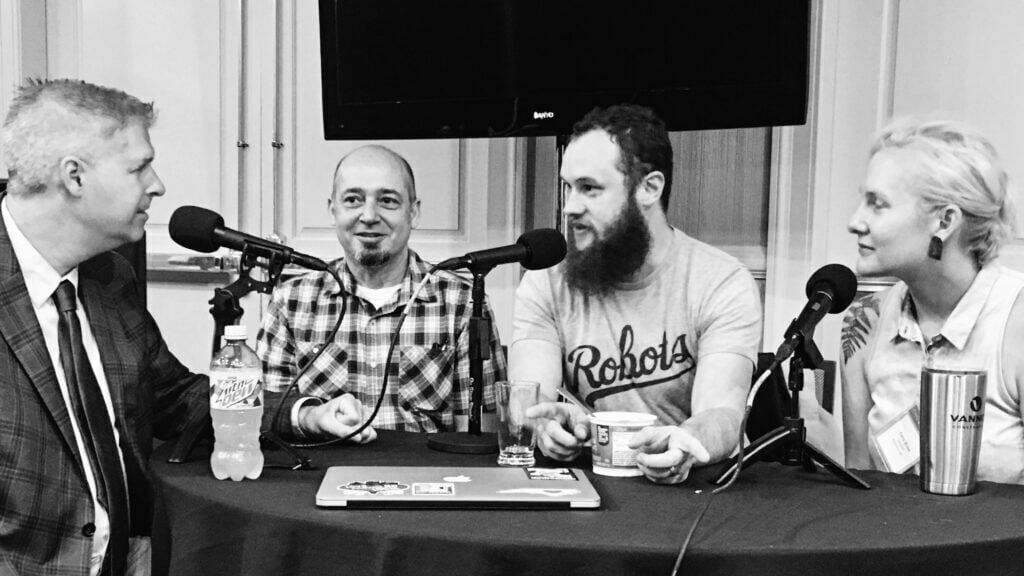
Josh McCarty, Chief Analytics Researcher
Josh McCarty attributes his enthusiasm for urban design and development to this simple but powerful piece of wisdom — the indisputable fact that everyone does indeed dwell somewhere. Some of us are in dense, walkable, productive neighborhoods, some of us are in endless sprawl, and still, others are in rural areas.
Josh grew up in eastern North Carolina, where he saw firsthand how rural countryside could be consumed by suburbia. His work at Urban3 is motivated in large part on reversing that damage and keeping other places from meeting the same fate.
What is your title at Urban3 and what do you do?
I’m the firm’s Chief Analytics Researcher and resident GeoAccountant™
What is “GeoAccounting?”
GeoAccounting is our term for combining geography and accounting. Essentially, it refers to finding new ways to visualize local finance.
Why does this matter to you?
I grew up outside Raleigh, North Carolina, in Wake County. I watched city-building in fast forward in pretty bad ways — how to do it wrong. The population of the area where I grew up tripled in a very short period of time. The place was literally replaced with really careless development.
I didn’t have the words for it at the time, but now I realize that what I was really upset about was the placelessness of it. People that are growing up there now feel like they don’t really come from somewhere. What we also realize now is the economic vulnerabilities of that strategy. It’s so frustrating because now we know better.
How did that lead you to Urban3?
I graduated from UNC-Asheville with a liberal arts degree in economics in 2007. I graduated into a recession. I met Joe [Minicozzi] through the career center there; he had recently visited to give a lecture. I wanted to learn about planning and urban design. That’s what I was passionate about — city stuff. I didn’t know the term “urbanism” yet.
I remember my first conversation with Joe [Minicozzi] really well. I was sitting in the back of my broken-down Buick Century in a garage on Patton Avenue. I decided to give him a call and told him I was interested in architecture but that I’d actually rather decide what gets built than design what other people want to build. Joe said, “That’s what a developer does.” I was like, “That’s a job?”
Everyone doing development was going on ice because of the economy, but even so, the trends in Asheville pushed us into this work. We needed affordable housing. We could see what some of the improvements could be and we could see what we could learn from other cities but it wasn’t happening. It also seems so basic and automatic now but at the time, it just wasn’t happening: mapping where we get our revenue, accounting for our basic infrastructure, things like that.
Around this time, Joe was asking some questions of our Downtown Association about development and finance. The things he was asking about then ultimately became the building blocks of Urban3– things like, Does Asheville spend what its peers spend? Is its downtown worth what peer cities’ downtowns are worth? Some of these questions had to be answered with a map. I was learning GIS at the time and all of these elements came together.
I later moved to the Research Triangle and got my bona fides in city planning. By the time I finished my master’s degree, Joe had started Urban3 and I contacted him to see how they were doing. I had more GIS chops and knew more about planning. We just started working together and it clicked. Surprisingly, that was 10 years ago.
What has been the most encouraging thing about your work for Urban3? The most distressing?
Even when I was growing up, I had this hunch — like an itch. Sprawl was the default for so many American cities. It was so cheap and so normal. But there was always an itch to me that it just didn’t feel right: Is sprawl too expensive? Are we doing this wrong? This just doesn’t look like it makes sense. It just looks crazy, the way we build stuff.
A project in Lancaster, California was the first time I looked at the actual costs. What I found made me think about how early climate scientists must have felt when they ran their models the first time: “This can’t be right. If this was right, everything would be falling apart.”
Well, then everything started falling apart. The numbers are the numbers. Seeing that start to happen and become real gave me two reactions: “Ah-ha, I was right!” and then “Oh, this is going to be bad.”
Americans are not used to things breaking and not getting fixed. We tend to think if the power goes out — it’ll come back. Well, what if it doesn’t? That’s what it felt like looking at how cities were going to run out of money paying for all of the things that come along with sprawl: roads, sewer, infrastructure.
It’s exciting to be in the position of being one of the people who have been saying for a while that this is how it’s going — but it’s also scary.
What does a really successful client engagement look like?
Most American cities are broken and are in the process of being repaired from the century-long disease of American planning. I don’t know if you’ve ever read the Bureau of Labor Statistics’ job profiles, but their description of the planning profession is the most horrifically depressing thing I’ve ever read. “Planners go to meetings and listen to people complain about their problems and nothing ever gets done.” That sounds like the worst job ever. When I’m talking to people, I’ve learned to skip all that and just say: “I work to help cities figure out where they get their money from.”
People just don’t have a way to think about this stuff. What is their budget? Where does that revenue come from? How expensive is that highway near your city?
So when you get people that want to try things and aren’t interested in succeeding at a rigged game, the people who can admit this is broken, and I want my city to be better — often, they’re more talented than we are — that’s really energizing.
We have been successful because we have figured out how to not shame people. We can beat people over the head with information, we can cudgel them, but evidence shows that’s not productive. If we tell people “You built your city stupidly and you’re going to go broke,” we’ll be right, but no one will listen. People will double down.
Instead, we say: This is the Geoaccounting approach. We won’t judge you for building sprawl. You just have to put the right price tag on it. Then people will realize that they may already be past the point where their approach makes sense.
Our clients are willing to take chances and try new ways of operating and thinking about how they develop their community. They can’t go back and erase the mistakes of the past, but our work helps them understand how not to repeat those mistakes — and how to build long-term wealth for their residents.

Josh and his colleagues are eager to help you better understand your city’s finances so that you can grow with resilience and responsibility. Contact us to learn what we’ve done for other communities and what we can do for yours.